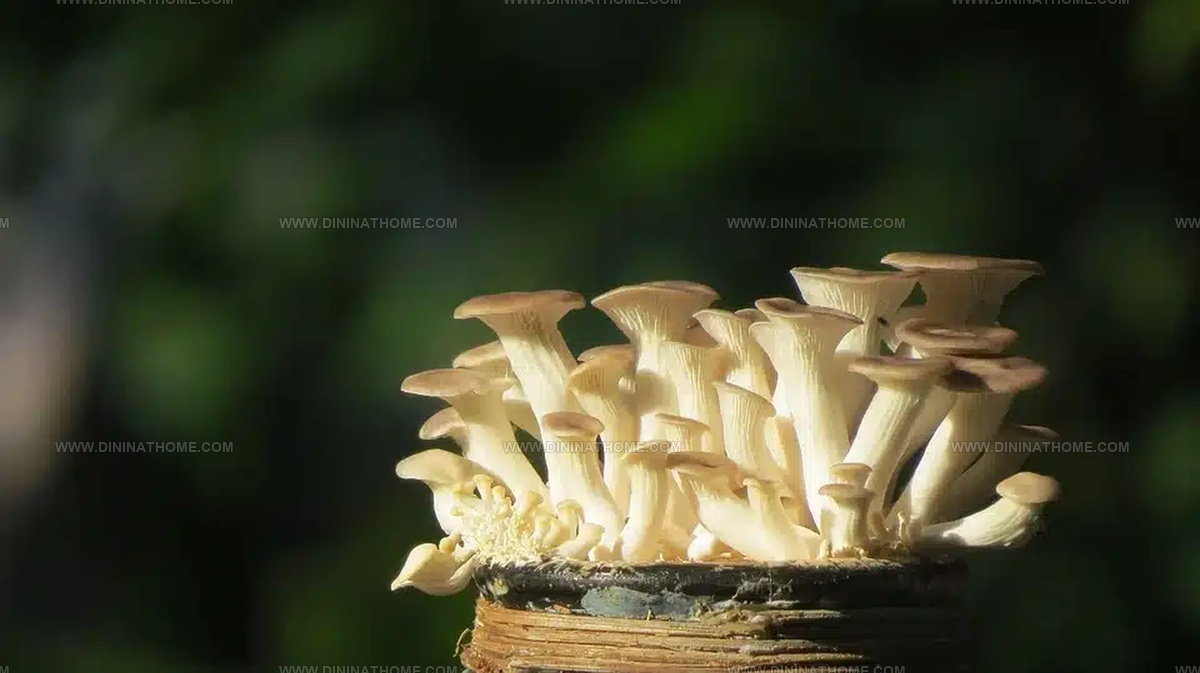Oyster Mushrooms Taste Like: Nature’s Delicate Forest Gems
Oyster mushrooms, with their unique flavor profile, have captured the attention of food enthusiasts and culinary adventurers alike.
Growing in clusters and sporting a distinctive fan-like shape, they stand apart from other mushroom varieties.
Chefs and home cooks appreciate their versatility in various dishes, from stir-fries to gourmet pasta.
Their subtle, nuanced characteristics make them a fascinating ingredient that goes beyond simple taste expectations.
Nutritionists also praise these mushrooms for their potential health benefits and impressive nutritional content.
The world of oyster mushrooms is rich with surprises that extend far beyond their initial appearance.
If you're curious about what makes these mushrooms so special, stick around to uncover their delightful culinary secrets.
What Are Oyster Mushrooms?
Mushroom lovers praise these tasty fungi for their smooth feel and gentle flavor that people enjoy around the world.
White, gray, or brown tops with lines underneath make these mushrooms special, with wide and thin caps shaped like shells or fans.
Small bumpy edges mark their tops, and they often grow in small groups or as single large mushrooms.
Some people call them pearl oyster or tree oyster mushrooms.
Wild patches appear near trees in mild forest areas across different countries, and farmers also grow them commercially.
Cooks use these mushrooms in many different food styles, but they particularly shine in meals from China, Japan, and Korea.
Taste of Oyster Mushrooms
Oyster mushrooms carry a unique taste that hints at earth and sweetness.
These delicate fungi look just like oyster shells and smell deeply rich.
People enjoy oyster mushrooms for their special flavor notes.
Their mild taste works nicely in many meal choices and doesn't overpower other ingredients.
Different cooking methods change how these mushrooms feel when you eat them.
Frying and roasting help mushrooms stay firm, while braising and sauteing make them softer and smoother.
Types of Oyster Mushrooms
Mushrooms with oyster names show up in different shades.
King oyster mushrooms taste smooth like butter, while yellow ones hint at citrus notes.
Yellow mushrooms feel more solid and carry hints of melon and cucumber flavors.
King Trumpet mushrooms grow larger and taste sweeter compared to other types, which makes them perfect for cooking in stews or on grills.
No matter what color they show, these mushrooms bring wonderful taste to plates.
Pearl Oyster Mushrooms
Pearl oyster mushrooms stand out as the top choice among oyster mushroom varieties found in grocery stores.
Shoppers can spot them by their distinctive large gills matching the mushroom's color, along with thick and short stems.
Their appearance ranges from white to light brownish-gray, creating an appealing visual.
Chefs appreciate these mushrooms for their delightful sweet and woody taste, which works wonderfully to boost other ingredients in many recipes.
King Oyster Mushrooms
King oyster mushrooms stand out with unique small caps and thick stems.
Chefs recognize these mushrooms for their trumpet-shaped bodies, which earned them nicknames like French horn mushrooms and king trumpet mushrooms.
Their coloring shows soft brownish-white tones with caps smaller than pearl oyster mushroom relatives.
Mushroom lovers appreciate their hearty meat-like texture and rich flavor that adds wonderful depth to many recipes.
Golden Oyster Mushrooms
Golden oyster mushrooms shine with their bright yellow color, earning them a special nickname.
Mushroom experts often cultivate these delicate fungi at home since stores rarely stock them.
Clusters of golden oysters grow together with gentle caps that carry a rich nutty taste when someone cooks them carefully.
Raw or undercooked versions can taste bitter and unpleasant.
Chefs can substitute these golden mushrooms in any dish that normally uses pearl oyster mushrooms.
Blue Oyster Mushrooms
Blue oyster mushrooms stand out with their unique chewy quality, making them an excellent alternative to meat.
These special mushrooms showcase deep blue caps that gradually change color as they grow older.
Their darker tops contrast nicely with lighter gills, creating a distinctive appearance.
Flavor-wise, blue oysters offer a gentle taste with subtle woody and sweet notes.
Cooks appreciate these mushrooms for their similarity to pearl oyster mushrooms.
Chefs can swap blue oysters into nearly any recipe that normally uses pearl oysters without missing a beat.
Pink Oyster Mushrooms
Pink oyster mushrooms catch your eye with their wavy edges and eye-catching pink color. Tiny white spores sit underneath these rosy-hued fungi.
Mushroom clusters change based on growing space - sometimes they look delicate and skinny, other times dense and full.
These mushrooms carry a woodsy taste and count as a special type that rarely shows up in grocery stores.
Shopping for them might feel tricky, but home growing works well. Cooks can swap pink oyster mushrooms into recipes that ask for pearl oyster mushrooms without trouble.
Black Oyster Mushrooms
Black oyster mushrooms showcase a unique black cap marked by white patterns across its surface. Growing in shelf-like shapes, these special fungi carry a Japanese name - Shimofuri - which reflects their marbled appearance.
Young black oysters start with rounded caps that gradually spread out and become more wavy as they mature. Their texture remains consistently dense and substantial, offering a chewy eating experience that makes them stand out among other mushroom varieties.
Phoenix Oyster Mushrooms
Phoenix oyster mushrooms share many traits with pearl oyster mushrooms, but feature smaller and paler caps.
Slender stems make these mushrooms stand out as slightly taller compared to their pearl cousins.
Fun Facts About Oyster Mushrooms
Oyster mushrooms are special fungi that munch on rotting wood. People spot these tasty mushrooms on hardwood trees during spring and fall all around the world.
Mushroom caps look like fans or shells and can grow between 2 to 10 inches wide. Young mushrooms start out curled up and then spread out flat as they get older.
Colors range from white and yellow to brown, tan, and even pink!
Oyster mushrooms smell unique, similar to licorice or anise.
Scientists call them Pleurotus ostreatus, which means "sideways oyster" because of their shell-like shape.
Hunting for these mushrooms can be tricky since similar species look almost identical.
Experts recommend bringing someone who knows mushrooms when searching the forest.
Interesting fact: These mushrooms have special roots called mycelia that act like hunters.
Mycelia can actually kill and eat tiny worms and bacteria. Most mushrooms just sit and wait for food, but oyster mushrooms actively hunt their meals.
Careful mushroom hunters know to:
Are There Side Effects of Oyster Mushrooms?
Oyster mushrooms contain a harmful protein called osteolysis.
Research on animals shows this protein might lead to breathing troubles and higher blood pressure.
Scientists still do not know how this impacts people.
People with sensitive lungs could develop hypersensitivity pneumonitis after eating these mushrooms.
This condition creates inflammation in small lung airways, causing fever, joint discomfort, and chills.
Zinc levels are high in oyster mushrooms.
Eating large quantities over extended periods might create copper shortages.
Such mineral imbalances could reduce white blood cell numbers and weaken immune system responses.
Rare instances of metal contamination exist with mushroom products.
Shoppers should purchase mushrooms from trusted sellers who follow careful farming methods and maintain strict quality standards.
How to Cook Oyster Mushrooms for Best Taste
Oyster mushrooms are tender and full of flavor, making them a great addition to many dishes when cooked the right way:
Enjoy oyster mushrooms as a side dish, toss them into pastas, or add them to soups and stir-fries for a delicious boost of flavor.


James Walker
Lead Recipe Developer & Culinary Educator
Expertise
Southern Cuisine & Farm-to-Table Cooking, Recipe Development & Testing, Culinary Education & Instruction
Education
School: Auguste Escoffier School of Culinary Arts
Program: Diploma in Culinary Arts and Operations
Focus: Comprehensive training in classical and modern culinary techniques, kitchen operations, and farm-to-table practices.
James didn’t learn cooking from a TV show, he learned it from busy kitchens, family gatherings, and long afternoons spent testing recipes the hard way.
After training at the Auguste Escoffier School of Culinary Arts, he brought his love for real, down-to-earth food to every dish he makes.
At Dining At Home, James loves building recipes that feel familiar but still have something special, like adding a twist to a classic or making a slow Sunday dinner feel brand new.
When he’s not in the kitchen, you’ll probably find him swapping garden tips at the farmers’ market or teaching his daughter how to flip pancakes without a mess (almost).